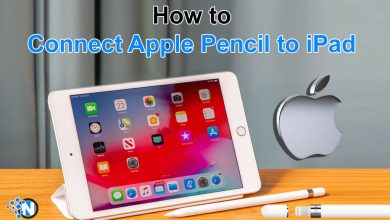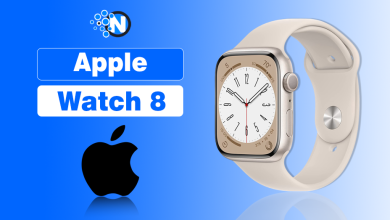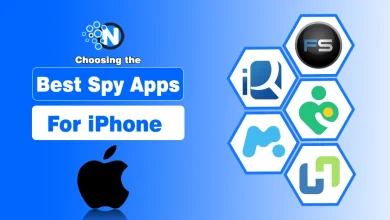
The highly dynamic mobile application environment has made it essential to retain customers and encourage them to establish impactful interactions to succeed in business. Apple Push Notification Service is one of the most potent features that can be utilized by iOS developers and businesses, which allows communicating with the users directly, even when their applications are not allowed to run.
This programmatic notification system acts as a connection between your app and the world of iOS users, with a market share of 27.59%, with timely notifications relevant to those users that can be a key to user retention and increases in conversion rates. Notifications are more than just alerts; they are strategic tools that can re-engage users, bring them back to the app, and ultimately drive business success.
In this blog post, I will explain what the Apple push notification service is, along with some best practices and mistakes to avoid for successful implementation.
What is Apple Push Notification Service and How Does It Work?
Apple push notifications is Apple’s centralized service for securely and reliably delivering push notifications to iOS, macOS, watchOS, and tvOS devices. Acting as an intermediary between app servers and user devices, APNs provides a scalable solution that handles device tokens, message queuing, and delivery acknowledgment.
It is a complex job of servicing billions of notifications a day with the ability to achieve security, reliability, and desirable performance across the entire Apple ecosystem.

Structure of Apple Push Notifications Architecture Concepts
This system is composed of some major components collaborating effectively with each other. The progress starts when your application server sends the notification payloads to the Apple APNs servers. These servers are then used to forward messages to relevant devices by using their special device tokens. The notification undergoes treatment in a receiving device and is presented by the settings of your app and user preferences.
Notifications Delivery Process of APNs
The request your server makes to Apple push notifications that have the notification payload and device token begins the notification journey. APNs authenticate the request and verify that the device is alive, and either deliver the message immediately or hold the message in a queue to be delivered later. When the device is powered on, pending notifications are sent according to priority and timing settings.
Device tokens are address tokens that are altered at certain time intervals as security measures. Your app should update these tokens on a regular basis to ensure a reliable delivery. Either certificate-based or token-based authentication is supported by APNs, with the preference going to token-based authentication in new implementations.
How Apple Push Notification Service Impacts Businesses Today
Modern businesses using iOS push notifications continue to record revolutionary outcomes in various key performance indicators. Apple push notifications offer a direct communication channel, which allows companies to stay in constant contact with their audience base, resulting in a substantial increase in retention levels and profitability components.
Increased User Engagement Metrics
The engagement rate of strategic push notification campaigns improved by 25-50% compared to conventional marketing channels. Push notifications are urgent and motivate users to take immediate actions, especially when offered with time sensitivity in mind, when a news source is breaking, or when there are important changes on account.
Revenue Enabling Opportunities
E-commerce companies that use Apple push notifications to conduct campaigns on cart abandonment, personalized product recommendations, and flash sale, record high revenues. A higher level of conversion and customer lifetime value is attained due to the possibility of contacting users immediately with relevant offers at the best times.
Operational Efficiencies Advantages
APNs enable the automation of communication processes to decrease the level of manual interaction but preserve individual user experiences. Sophisticated approaches to notification can also be deployed by businesses leveraging user actions, customer preferences, lifecycle, and hence, more effective interactions can be established between business customers.
Data-Driven Insights
Apple push notifications provide delivery and engagement analytics, which enable businesses to understand user behavior patterns. The information allows constant improvement of notification tactics, scheduling, and content to maximize efficiency while minimizing user exhaustion. Apple push notification provide delivery and engagement analytics, which enable businesses to understand user behavior patterns. The information allows constant improvement of notification tactics, scheduling, and content to maximize efficiency while minimizing user exhaustion.
All these business implications reveal the reason why Apple Push Notification Service has become an essential ingredient in contemporary mobile app strategy.
Best Practices for Developers Using Apple Push Notification Service
To implement APNs push notification efficiently, best practices associated with development practices necessary to guarantee maximum performance, security and user experience should be followed. Adhering to these recommendations enables the developers to understand their own pitfalls and to maximize the impact of notifications.

Implementing Authentication and Security
Consider using token-based authentication where there is an opportunity, since it enhances security and facilitates certificate management. Token-based authentication avoids the need to renew certificates and allows multiple app bundles and only one key. Error handling: Put proper error handling in place in case of authentication failures, as well as securely storing authentication tokens.
Quality Assurance and Testing
Create extensive test plans that will address various situations, such as network status, device status, and user permission conditions. Operate the Apple development and production environment accordingly, and ensure that the product is well tested. Automate the testing on delivery of notifications, formatting and user interaction patterns.
Performance Monitoring
Start monitoring where the rates of notification delivery, engagement rates and error states are tracked. Observe the response of APNs’ push notification when there are problems with delivery and adjust the approach accordingly. Introduce logging and analytics, which can help to understand how users behave. It will help improve notification timing and content.
User Experience Considerations
Use design notifications that are easy to understand and take action. To improve user experience, use rich notifications that will include imagery, actions, and interactive features. Conserve user preference and allow fine-grained controls about notifications in your app preferences.
These best practices ensure reliable, secure, and effective Apple Push Notification Service implementation that enhances rather than disrupts user experience.
Common Pitfalls and How to Avoid While Using APNs
Even professionals may have a tough time implementing iOS push notification systems. When realising these pitfalls and their causes, it will be possible to avoid the expensive mistakes and improve the notification process.
Errors in the Certificate Management
Expired certificates and the issuance of new certificates are a challenge to many developers. There is a total failure in delivering notifications with expired certificates, which people usually realize when they cease receiving notifications. Put in place automated certificate red flag systems that remind you well before expiration.
Payload Size Violation
The payload size limit for Apple push notifications should apply to notification rejection and failure to be delivered. The notification data is composed of all the data on the screen, including visible text. During development, it is important to ensure that payloads are not too large and introduce validation checks to assure a notification is not oversized (or malicious). Manage to keep under the limitation by using payload compression skills and consider implementing only that information that is essential.
Errors with Device Token Handling
Not having proper management of device token updates results in the failure of deliveries and discomfort for users. The changing of device tokens is caused by an update to the device, a device restore, or an update to iOS. Use mechanisms that take handy action on updating tokens, and invalid tokens should be eliminated as soon as possible. Do not think that tokens are always fixed; otherwise, the delivery failure rate will grow with time.
The Problem of Notification Timing
Inappropriately sending notifications at an inopportune time makes users frustrated and may result in uninstalling the application. When sending out notifications, consider user time zones and usual patterns of use as well as the relevance of the content. Deploy smart timing systems that honour user preferences and particular circumstances. Do not send notifications at the common sleeping time unless there is an urgent need.
Issues with the Authentication Configuration
Improperly set up authentication settings lead to an overall malfunction of services. Verify bundle identifiers, key setups, and environment twice. Have authentic testing activities at a large scale and have independent settings of various environments.
By learning from these pitfalls, developers can ensure solid Apple Push Notification Service implementations with a consistent and reliable user experience.
Conclusion
Apple Push Notification Service is essential for effective iOS app development, enabling meaningful user engagement and driving business success. Organizations focused on mobile app performance should understand APNS architecture, implementation, and best practices. Well-executed push notifications boost user retention and revenue. As the mobile landscape evolves, mastering APNS is key to staying competitive and delivering responsive, engaging app experiences.




